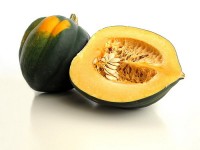
September 15- September 21, 2013
Market Outlook
Lettuce:
Market is stronger as supplies are less plentiful and demand is up with schools back in session. Overall, we are seeing good quality on inbound.
Leaf:
Romaine market is steady to up a few dollars, and green leaf, red leaf are mostly steady. We are seeing minor fringe burn on romaine.
Broccoli:
Broccoli market is a few dollars higher and is continuing to rise through the end of the week. We have seen good quality.
Cauliflower:
Market is coming off the lower levels and starting to rise. Quality is good
Carrots:
We have had our first arrival on Michigan carrots and the quality is good. The market is steady to lower.
Celery:
Eastern celery is stable. California celery market is a few dollars higher. Quality has been very good.
Strawberries:
Supplies continue to remain tight and the market is unchanged from last week. Quality is fair with most lots showing bruising on inbound. Also reports of the occasional moldy berry.
Potatoes:
We are into new crop Idahos, Norkotah variety. We will see Burbanks start the first or second week of October. Quality has been very good, and cost is steady but at higher levels.
Onions:
Market on onions has remained steady. We are sourcing out of New Mexico, and will look to move to new crop Idaho onions in the coming weeks.
Citrus:
The domestic lemon market has moved up a few dollars again and supplies are extremely short. Many shippers are out and have been for weeks. We are getting pro-rated and having orders pushed back for days. We will likely be looking at pro-rating orders at some point. Smaller size oranges ( 113, 138 ) continue to be tight.
Cucumbers:
Market is steady to lower with good quality.
Peppers:
Market on peppers is steady with product out of New Jersey and Michigan.
Tomatoes:
Tomato market on rounds is steady. Romas are up slightly. Grapes and cherries remain in very short supply, and the market is strong.
Feature of the Week
This week Primo is featuring acorn squash. True to winter squash form, acorn squash has characteristic inedible hard, thin skin and firm flesh. It is roughly ovoid in shape with thick ridges, five to eight inches long, four to five inches across, and has a defined point at the bottom. The flesh is sweeter than summer squash, with a nut-like flavor. It is shaped like a ribbed acorn, hence its nickname. The growing period is longer than summer squash, giving it plenty of time to soak up the sweetness of the sun.
Recipe of the Week
Stuffed Acorn Squash
Ingredients:
1 acorn squash, halved and seeded
4 tablespoons butter, divided
4 tablespoons brown sugar, divided
2 cups dry bread stuffing mix, divided
1 1/2 cups chicken broth, divided
salt and pepper to taste
garlic powder to taste
onion powder to taste
Directions:
Preheat oven to 400 degrees F (200 degrees C).
Place squash, face up, in a shallow baking dish. In each half place 2 tablespoons butter, 2 tablespoons brown sugar, 1 cup stuffing mix, 3/4 cup chicken broth, salt, pepper, garlic powder and onion powder. Wrap each half tightly with aluminum foil.
Bake in preheated oven for 60 minutes, or until squash is very tender.
Fun Facts of the Week
-
Acorn squash is named for its acorn-like shape and comes in a variety of colors – dark green, tan, yellow, and orange.
-
Acorn squash is a type of “winter squash.” The term dates back to a time before refrigerators when squash harvested in the fall were known as winter vegetables because they could last until December.
-
Very high in Vitamin A.
-
A source of Fiber, Potassium, Folate, Vitamin C, B6 and B1.


